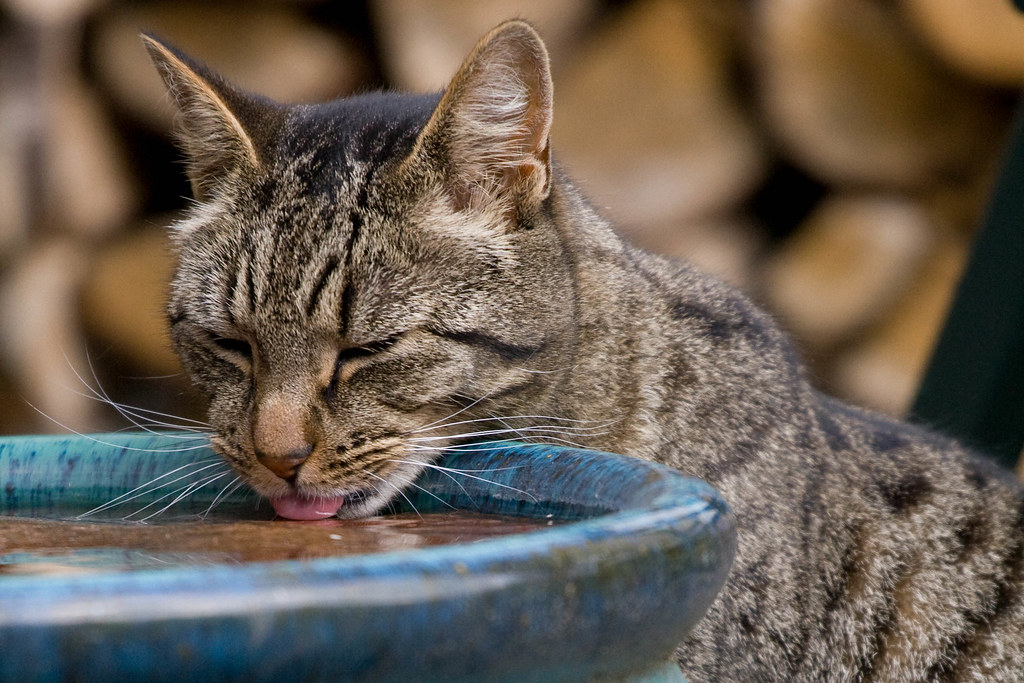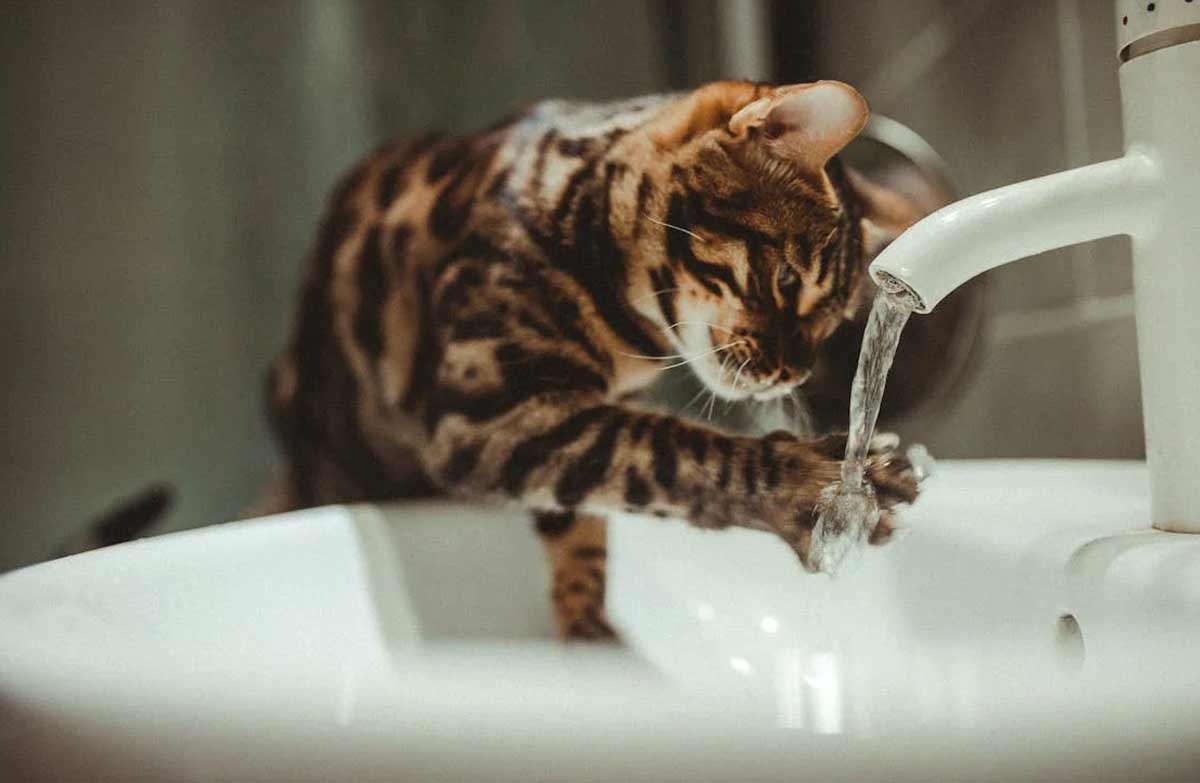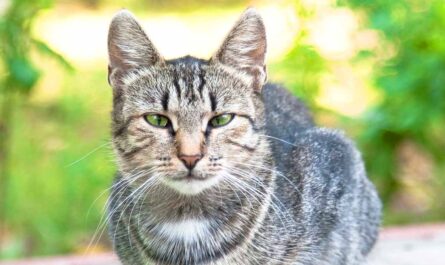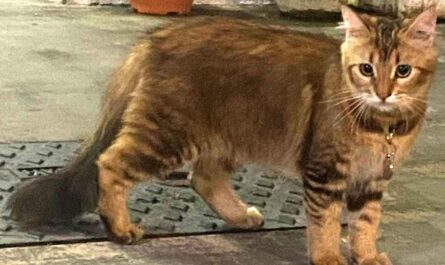Why is my cat drinking so much water all of a sudden? Ever notice your feline friend glued to the water bowl, lapping up water with seemingly insatiable thirst? It can be a cause for concern, especially since cats aren’t exactly known for their love of hydration. While the occasional extra trip to the water dish might not be a cause for alarm, a noticeable increase in water intake can sometimes signal an underlying health issue. So, how can you tell the difference between normal feline hydration and a potential problem.
This guide will help you demystify your cat’s thirst. We’ll explore the various factors that influence a cat’s water needs, discuss potential health concerns associated with excessive drinking, and provide practical steps to take if you notice your cat’s water intake has significantly increased. Remember, knowledge is purr-ower (pun intended!), and by understanding your cat’s hydration habits, you can ensure they stay happy and healthy.
II. Demystifying Thirst: Understanding Normal Cat Hydration
Water is the elixir of life, and our feline companions are no exception. Just like us, cats rely on water for a variety of essential bodily functions. Here’s a closer look at why water is so important for your cat’s health:
- The Building Blocks of Life: Water makes up a significant portion of a cat’s body weight and is crucial for various cellular processes. It helps transport nutrients throughout the body, aids in digestion, and regulates body temperature.
- Flushing Out Toxins: Water plays a vital role in excreting waste products through the kidneys and urine. Proper hydration helps prevent the formation of bladder stones, a painful condition for cats.
- Keeping Cool: Cats don’t sweat like humans do. Instead, they pant and regulate their body temperature through evaporation. Adequate water intake helps facilitate this process, especially during hot weather or after exercise.
Understanding the importance of water for your cat’s health is the first step in recognizing potential problems. The next section will delve into the various factors that can influence your cat’s thirst levels.
A Guide to Action: Managing Excessive Drinking at Home
Has your feline friend turned into a bit of a water guzzler lately? While cats naturally get most of their hydration from their food, a sudden increase in water consumption can be a cause for concern. But before you jump to conclusions, let’s explore some ways to manage excessive drinking at home and determine if a trip to the vet is necessary.
Environmental Adjustments: Creating a Water Wonderland
Cats can be picky about their water source. A stagnant bowl of water might not be enticing enough, especially for discerning feline palates. Here’s how to create a water-rich environment that encourages your cat to drink:
- Multiple Marvelous Bowls: Provide several water bowls throughout your house, especially in areas your cat frequents. This way, they always have easy access to fresh, clean water.
- Material Matters: Experiment with different bowl materials like stainless steel, ceramic, or glass. Some cats might prefer bowls with wider rims, while others may favor shallower dishes.
- Fountain Fun: Consider a pet fountain. The gentle bubbling sound and movement of the water can be more appealing to some cats, encouraging them to drink more.
- Freshness First: Make sure to replace your cat’s water bowls with fresh, cool water daily. Stagnant water can become unappetizing and harbor bacteria.
By providing a variety of water sources and keeping them sparkling clean, you might just quench your cat’s thirst for a change in their hydration routine.
Dietary Modifications: Food for Thought (and Hydration!)
Did you know that a cat’s diet can also play a role in their water intake? Here’s how what your cat eats can affect their drinking habits:
- Dry Food Dilemma: Dry food generally contains less moisture than wet food. If your cat primarily eats kibble, they might need to drink more water to stay hydrated.
- Talking to Your Vet: Consult your veterinarian about potentially adjusting your cat’s diet to include more wet food. This can be a good way to increase their moisture intake naturally.
- Treat Time Hydration: There are even water-rich treats available for cats! These can be a fun and hydrating way to supplement your cat’s fluid intake, especially if they’re not a huge fan of water bowls.
Remember, any significant changes to your cat’s diet should be discussed with your veterinarian first. They can help you create a personalized plan that meets your cat’s specific nutritional needs and hydration requirements.
Monitoring Water Consumption: Keeping Tabs on Your Cat’s Thirst
If you’re concerned about your cat’s water intake, it’s helpful to monitor their drinking habits. Here’s how to become a feline hydration detective:
- The Daily Dip Test: Fill your cat’s water bowl to a specific level and mark it. After 24 hours, check the water level again. A significant decrease might indicate increased drinking.
- The Litter Box Lowdown: Monitor your cat’s litter box usage. Increased urination can be a sign of excessive water consumption or an underlying medical condition.
Important Note: These methods are for informational purposes only. If you notice any significant changes in your cat’s drinking habits, consult your veterinarian for a proper diagnosis. How AI, ChatGPT maximizes earnings of many people in minutes
Encouraging Play and Activity: Keeping Your Cat Happy and Hydrated
Just like us, exercise can be good for your cat’s overall health and hydration. Here’s how playtime can promote a healthy water balance:
- Playful Pursuits: Engage your cat in regular play sessions using toys, feather wands, or laser pointers (used responsibly). Physical activity helps regulate their metabolism and can indirectly encourage them to drink more water to replenish fluids lost through exercise.
- A Hunting Ground at Home: Create a stimulating environment for your cat with climbing structures, scratching posts, and hiding spots. This not only keeps them entertained but also mimics their natural hunting instincts, which can increase their water needs.
By incorporating playtime and exercise into your cat’s routine, you’re not only keeping them happy and healthy, but you might also be encouraging them to drink more fluids naturally.
Early Intervention: When to Seek Veterinary Attention (continued)
A trip to the vet is crucial to rule out any potential medical causes. Early detection and treatment are essential for ensuring your cat’s health and well-being. Motivation – Mind – Success – Thinking – Productivity – Happiness
Remember: You are your cat’s best advocate. By being observant and taking action if you notice any concerning changes in their drinking habits, you can help them stay happy, healthy, and hydrated for years to come.
Here are some additional resources that you may find helpful:
- The American Society for the Prevention of Cruelty to Animals (ASPCA): https://www.aspca.org/pet-care
- The Veterinary Partner website: https://veterinarypartner.vin.com/
Don’t hesitate to reach out to your veterinarian if you have any questions or concerns about your cat’s water intake or overall health. They are there to guide you and ensure your feline friend receives the best possible care. Business – Money Making – Marketing – E-commerce

Other Interesting Articles
- How to Make Your Cat Really Happy: 29 Tips You May Try
- How to Train Your Cat to Stop Urine Marking? 12 Tips
- How Do Cats Communicate Each Other? 11 Body Language
- 24 Ways To Know If You Have An Extremely Happy Cat
- What Smells Do Cats Hate: 34 Scents You Must Avoid
- Everything You Need To Know About Cat Territory Marking
- 12 Reasons Why You Should Adopt A Second Cat
- 12 Reasons Cats Pee Outside the Litter Box: How To Solve
- 14 Reasons Why Cats Overgroom: Surefire Ways To Stop It
- Why is My Cat So Clingy? 13 Common Signs: 9 Caring Tips
- Is Your Cat Bored? 12 Common Signs: What You Can Do
- Stress in Cats: Causes, Symptoms, Remedies, Treatment
- 17 Common Signs Your Cat is Lonely: 10 Tips To Help Recover
- 14 Reasons My Cat is Acting Strange & Scared: What to Do?
- How Do Cats Hunt Their Prey, Mice, Bird, Fish, Rat For Food?
- How To Introduce A New Kitten To An Older Cat: 16 Tips
- 15 Reasons Why Do Cats Lick and Groom Each Other
- Domesticated Cats And Big Cats: 24 Similarities, Differences
- 21 Interesting Facts You Should Know About Feral Cats
- How to Socialize a Feral Kitten in 10 Simple Steps



